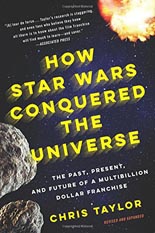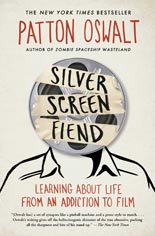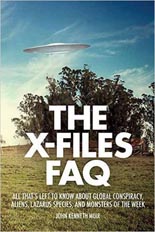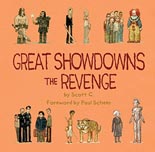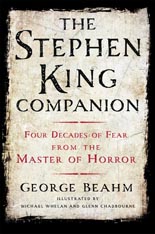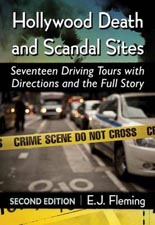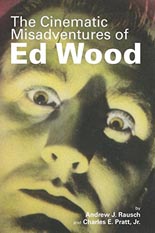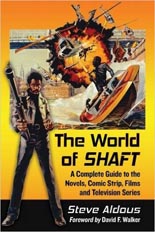 I knew that private dick John Shaft — as immortalized by Richard Roundtree in the 1971 blaxploitation classic — was a multimedia character; what I didn’t know was just how wide his net reached! Shut your mouth and get schooled with The World of Shaft: A Complete Guide to the Novels, Comic Strip, Films and Television Series, Steve Aldous’ examination of the groundbreaking hero. With the trade paperback being published by McFarland & Company, it shouldn’t surprise you that Aldous has done his homework; the aforementioned Shaft film figures heavily, as do its two sequels, the short-lived (and near-emasculating) TV series and the 2000 Samuel L. Jackson remake. But it seems like anyone could discuss that; not so with Ernest Tidyman’s 1970 novel that started it all and the six subsequent crazy-sounding adventures (an actual title: Shaft Among the Jews), each detailed here. And who knew that Shaft did his thing in the funny pages, too? His brief life as a syndicated comic strip is covered (with examples, thankfully), which brings us full circle to the present day with the current run of Shaft comics penned by BadAzz MoFo zinester David F. Walker, who provides this book’s intro.
I knew that private dick John Shaft — as immortalized by Richard Roundtree in the 1971 blaxploitation classic — was a multimedia character; what I didn’t know was just how wide his net reached! Shut your mouth and get schooled with The World of Shaft: A Complete Guide to the Novels, Comic Strip, Films and Television Series, Steve Aldous’ examination of the groundbreaking hero. With the trade paperback being published by McFarland & Company, it shouldn’t surprise you that Aldous has done his homework; the aforementioned Shaft film figures heavily, as do its two sequels, the short-lived (and near-emasculating) TV series and the 2000 Samuel L. Jackson remake. But it seems like anyone could discuss that; not so with Ernest Tidyman’s 1970 novel that started it all and the six subsequent crazy-sounding adventures (an actual title: Shaft Among the Jews), each detailed here. And who knew that Shaft did his thing in the funny pages, too? His brief life as a syndicated comic strip is covered (with examples, thankfully), which brings us full circle to the present day with the current run of Shaft comics penned by BadAzz MoFo zinester David F. Walker, who provides this book’s intro.
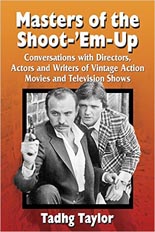 In respect to Tadhg Taylor’s Masters of the Shoot-’Em-Up, calling his subjects “masters” may be overstating the case. This is, after all, a book about “would-be Don Siegels,” as he lovingly dubs them, but that’s not to deny their contributions or the project at hand. Subtitled Conversations with Directors, Actors and Writers of Vintage Action Movies and Television Shows, it gives both voice and due to those journeymen helmers of the 1950s to the 1980s who kept busy cranking out hours of studio-backed entertainment without ever breaking big (or at least to household-name status). For perspective, one of the biggest names among Taylor’s two dozen or so interviews is arguably Jeff Kanew, director of Revenge of the Nerds, but he’s here to talk Eddie Macon’s Run and Tough Guys (yet not, oddly, the gun-toting gal pic that effectively halted his career, as well as that of its star, Kathleen Turner: V.I. Warshawski). Kanew’s recollections of studio interference and dueling egos are told with candor — a refreshing theme carried out by others, perhaps most notably actress-turned-screenwriter Leigh Chapman, who seems awfully dismissive of her own work, ranging from “black flick” Truck Turner to the Chuck Norris vehicle The Octagon. This is a breezy, fact-packed read for fans of Hollywood’s fringes.
In respect to Tadhg Taylor’s Masters of the Shoot-’Em-Up, calling his subjects “masters” may be overstating the case. This is, after all, a book about “would-be Don Siegels,” as he lovingly dubs them, but that’s not to deny their contributions or the project at hand. Subtitled Conversations with Directors, Actors and Writers of Vintage Action Movies and Television Shows, it gives both voice and due to those journeymen helmers of the 1950s to the 1980s who kept busy cranking out hours of studio-backed entertainment without ever breaking big (or at least to household-name status). For perspective, one of the biggest names among Taylor’s two dozen or so interviews is arguably Jeff Kanew, director of Revenge of the Nerds, but he’s here to talk Eddie Macon’s Run and Tough Guys (yet not, oddly, the gun-toting gal pic that effectively halted his career, as well as that of its star, Kathleen Turner: V.I. Warshawski). Kanew’s recollections of studio interference and dueling egos are told with candor — a refreshing theme carried out by others, perhaps most notably actress-turned-screenwriter Leigh Chapman, who seems awfully dismissive of her own work, ranging from “black flick” Truck Turner to the Chuck Norris vehicle The Octagon. This is a breezy, fact-packed read for fans of Hollywood’s fringes.
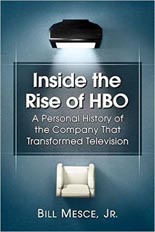 To paraphrase one of the iconic cable channel’s early jingles, great movies were just the beginning at Home Box Office, now known (and beloved) as HBO. For years an employee in its departments of marketing and consumer affairs, Bill Mesce gives readers an insider’s view of its roots and ultimate revolution in his brand bio, Inside the Rise of HBO: A Personal History of the Company That Transformed Television. As someone who remembers the days when if HBO wasn’t airing a movie, it was a boxing match, I was seated and safely buckled in for the trip back in time as soon as saw the cover. Mesce gets off to a rough start, rehashing the narrative of the medium’s birth before even reaching the realm of pay TV and specifically HBO. Once he does, however, it’s a hoot to recall such ill-fated tries at “original” programming as the footballs-and-tits sitcom 1st and Ten — a long, long way from current fare like Game of Thrones, which somehow has found critical acclaim and Emmy love and kept the tits. Ironically, the things I found most interesting are found in the appendices, in which Mesce shares the job details of those who select the movies to show and then put the schedule together like a 1,000-piece jigsaw puzzle. —Rod Lott
To paraphrase one of the iconic cable channel’s early jingles, great movies were just the beginning at Home Box Office, now known (and beloved) as HBO. For years an employee in its departments of marketing and consumer affairs, Bill Mesce gives readers an insider’s view of its roots and ultimate revolution in his brand bio, Inside the Rise of HBO: A Personal History of the Company That Transformed Television. As someone who remembers the days when if HBO wasn’t airing a movie, it was a boxing match, I was seated and safely buckled in for the trip back in time as soon as saw the cover. Mesce gets off to a rough start, rehashing the narrative of the medium’s birth before even reaching the realm of pay TV and specifically HBO. Once he does, however, it’s a hoot to recall such ill-fated tries at “original” programming as the footballs-and-tits sitcom 1st and Ten — a long, long way from current fare like Game of Thrones, which somehow has found critical acclaim and Emmy love and kept the tits. Ironically, the things I found most interesting are found in the appendices, in which Mesce shares the job details of those who select the movies to show and then put the schedule together like a 1,000-piece jigsaw puzzle. —Rod Lott


